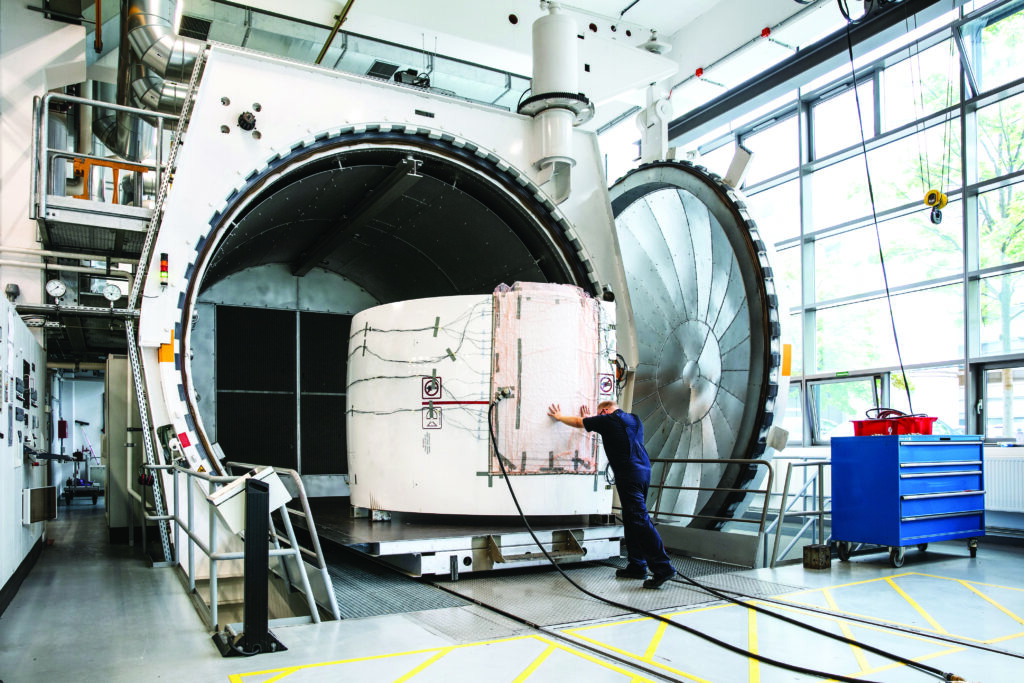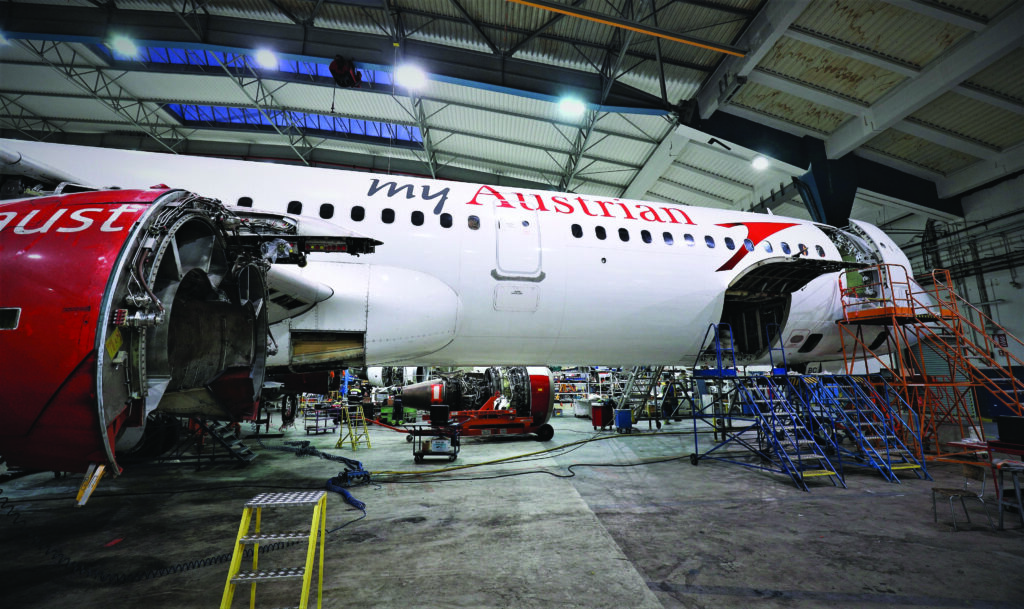There are some peculiarities in the maintenance of nacelles and thrust reversers, as well as some specific requirements. Mario Pierobon reached out to industry experts to define them, the frequency of maintenance, and the special skills and training needed for maintaining these important aircraft units
When it comes to an engine nacelle, protection is the name of the game. But they also contribute to an engine’s performance, efficiency and flight safety by directing and optimising high-speed airflow through the powerplant.
Nacelles operate in severe environments and are subjected to significant loads, including engine thrust and the fluctuations caused by forces and pressures, both external and internal. The nacelle systems also play a key role in reducing engine noise, including the integration of complex acoustic treatment that has been micro-drilled with millions of small holes on the inner composite surfaces, acting as sound traps.
The engine nacelle generally consists of several airframe units that include inlet cowls, fan cowls, thrust reversers, exhaust nozzles and engine mounts, explains Petr Doberský, director of Czech Airlines Technics. “These airframe units are usually manufactured by a different company than the manufacturer of the entire aircraft. In the case of Airbus and Boeing narrowbodies, the supplier of these units is usually Collins Aerospace (formerly Goodrich),” he says.
Peculiarities and requirements
In case of damage and necessary repairs, it is necessary to refer to the manufacturer’s documentation, or contact the manufacturer directly and consult with the manufacturer about repair options, affirms Doberský. “For third-party MROs, this support is usually paid. At the same time, this is probably the biggest peculiarity, because the aircraft original equipment manufacturers (OEMs) usually do not provide technical support for these units,” he says.
Lufthansa Technik’s Airframe Related Components (ARC) services unit offers maintenance, repair and overhaul (MRO) services to all commercial aircraft nacelle types. “General requirements are to hold approvals as a maintenance organisation (EASA Part 145), access to manuals, availability of skilled workers, organisational set-up, access to materials and processes to handle these components correctly,” says Henrik Schmutzler, head of MRO nacelles at Lufthansa Technik. “The type of damage influences the work scope’s variation. Often, it is decided only after the inspection whether the work package is for 80 or 800 hours. Customers also require different levels of maintenance. Both thrust reversers and other nacelle parts require specific tooling for disassembly and assembly.”

As the size of engines increases, the nacelles also become larger. “As a result, logistics to transport nacelle parts becomes increasingly challenging,” reports Schmutzler. “Our ARC services unit has local repair stations in Hamburg, Shenzhen, and Dubai. For some work scopes we offer on-site repair teams that come to the location where the customer/parts are located.
“Major repairs require complex equipment for curing of composite repairs with heat blankets. In addition, some repairs have to be conducted in an autoclave. This in turn requires part specific tooling. Our ARC services unit has one of the industry’s largest autoclaves.”
Frequency of maintenance and customer requests
Damage usually occurs because of one of two main reasons. The first is by accident (for example a bird strike, lightning strike, foreign object damage, ground vehicles or runway debris); the other is over time (such as wear, corrosion or water ingress), affirms Schmutzler. “Accidental damage repair is always on condition. Other inspections/repairs can be conducted on frequent events which depend on type specific requirements, experiences and in some cases regulations. In addition, customers have varying requirements as well,” he says.
According to Doberský, it is important to highlight that nacelles and thrust reversers are mostly inspected during higher levels of maintenance. “Their damage occurs due to the impact/absorption of foreign object debris (FOD), bird in flight or due to corrosion. A common reason for corrosion, such as on Airbus reversers or pylons, is de-icing liquid in combination with long-term parking of the aircraft (as seen during Covid),” he says.
“Customers often demand the best possible anti-corrosion protection of these units if they plan to park the aircraft for a long time and not operate it.
“In these cases, it is necessary to follow the manufacturer’s standard aircraft maintenance documentation, such as the aircraft maintenance manual (AMM), structural repairs manuals (SRM) or service bulletins (SB), or to contact the manufacturer directly to discuss the issue with them.”
Thrust reversers consist of various parts with different requirements. They are also specific to each aircraft type, and Czech Airlines Technics has thrust reverser inspection experience with the 737 MAX, the 737NG and the A320F, explains Doberský.

“For the 737 MAX, in accordance with the maintenance planning document (MPD), visual inspection of blocker door mechanisms is due every 6,600 flight cycles (FC), and inspection of static parts such as seals or thermal protection panels every 20,000 flight hours (FH).
“Most operational checks are to be performed every 15,000 FH,” he says. “For the 737NG, in accordance with the MPD, the most common interval between inspections is 15,000 FH or 12,000 FH. The interval between operational checks is 3,600 FH, 5,000 FH, 7,500 FH or 15,000 FH. In addition, the Federal Aviation Administration (FAA) has issued Airworthiness Directive no. 2019-18-03 ordering the performance of a thrust reverser upper locking actuator integrity test every 750 FH.”
The MPD of the A320F foresees diverse inspection intervals of individual parts, according to Doberský. “The most common interval between inspections is six years/7,500 FC/15,000 FH. The shortest interval is 3,000 FC for general visual inspection of ‘C’ duct hinge fittings; the longest interval is 12 years for tasks such as detailed inspection of forward frame to beam connections, primary sliders and tracks,” he comments.
Special skills and training
Lufthansa Technik’s ARC services unit employs sheet metal workers, composite workers and adhesive bonding workers. “Each work needs intensive training and experience. Also specific tasks such as grinding (such as for scarfing for composite repairs or corrosion removal) is a skill trained intensively. In addition, all workers need training in applying manuals correctly, aviation regulation, type training and training on all used tool and equipment,” says Schmutzler.
Experienced personnel and special equipment are indeed required for the maintenance of nacelles and thrust reversers, says Doberský. “Replacing damaged parts requires extensive disassembly and assembly, and it tends to be time consuming. Some bigger parts can only be replaced in the manufacturer’s shop, as they sometimes require very special tools and procedures not available to MROs,” he says. “Usually they are composite parts (such as acoustic panels) that need special procedures to be repaired (in case the damage location and dimensions are within repairable limits), but sometimes special preparations and an autoclave are also needed.
“Composite repair procedures tend to be sensitive to compliance with technological conditions (cleanliness, temperature and pressure) and the quality of the materials used (such as prepregs). Aircraft manufacturers offer both theoretical and practical training for mechanics and engineers for special composite repairs.”


